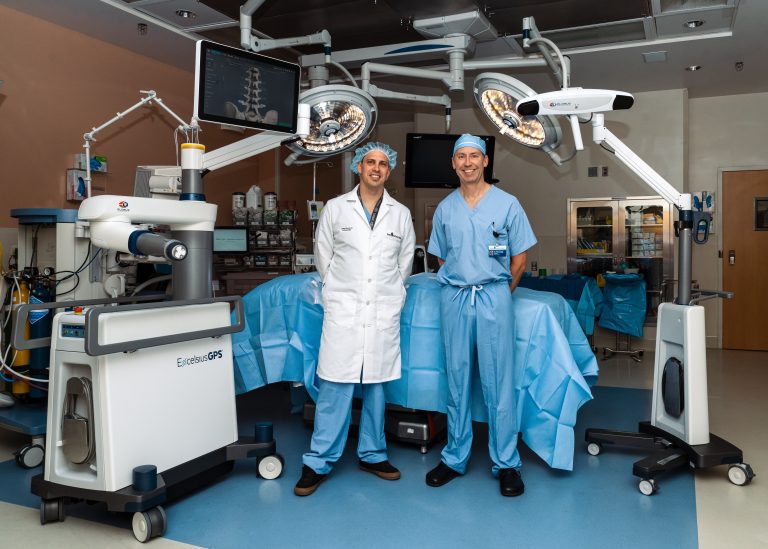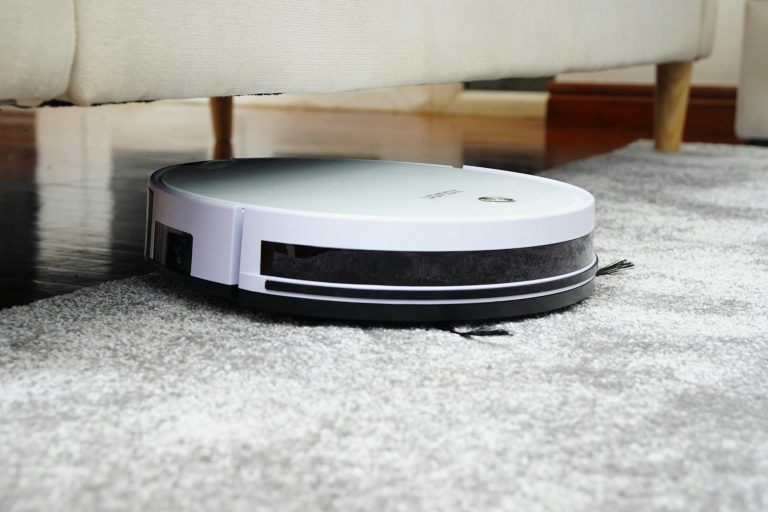
Robotic Navigation for Precise Back Procedures is contributed by Skagit Regional Health. This is published in the Spring, 2024 Edition of Vibrant Senior Options Resource Guide.
Pictured above: Skagit Regional Health spine surgeons Dylan Morris, DO (left) and David Mourning, MD (right) will use the Globus ExcelsiusGPS® Robotic Navigation system for hardware placement procedures using diagnostic images.
Surgeons at Skagit Valley Hospital started using a new robot in August to assist with precise back procedures.
The Globus ExcelsiusGPS® Robotic Navigation system uses diagnostic images of the patient, that are displayed on a computer screen, to help guide surgeons in providing precise, minimally invasive procedures. The images help the surgeon create a surgical plan based on the patient’s individual anatomy and determine the size and placement of screws.
Robotic Navigation for Safety
“The robot is a precision guide for hardware placement,” said spine surgeon David Mourning, MD. “It does not do nerve decompressions, such as discectomies or laminectomies, as those still require the steady hand of a surgeon combined with tactile feedback to safely operate.”
For patients, the main benefit is safety and efficiency, said spine surgeon Dylan Morris, DO.
“The robot will allow us to perform complex spine surgeries in a safe and efficient manner,” Dr. Morris said. “This will allow us to continue to give the best care possible for our patients at Skagit Regional Health.”
Robotic Precision
Dr. Mourning also noted the efficiency of hardware placement with the precision of the robot.
“Using the robot can greatly decrease time in the operating room by 10 to 20 percent as the screws go in like clockwork, eliminating delays due to visualization, difficult anatomy and other issues,” Dr. Mourning said. “Less time under anesthesia and shorter time in the OR is better for the patient.”
The robotics and navigation reduce the length of procedures, improves accuracy and dramatically lowers the level of radiation exposure from fluoroscopy, which is good for the patient and the OR team. In addition, the smaller incisions mean less tissue damage and a shorter hospital stay.
Reliability and Efficacy of Procedures
“We won’t do any new surgeries, we’ll just do the procedures safer and faster,” Dr. Mourning said. “I’ve been looking forward to getting this for several years now. I’ve used several other systems for guidance (image guidance, artificial reality headsets) but nothing compares to the reliability and efficacy of this system.”
This is not the first surgical robot in use in the operating rooms at Skagit Valley Hospital. Skagit Regional Health’s general, colorectal and thoracic surgeons, OB/GYNs and urologists use the da Vinci® Xi™ Surgical System, brought to the hospital’s operating rooms in 2018.
Learn more about Robotic Assisted Surgery at Skagit Valley Hospital.





















